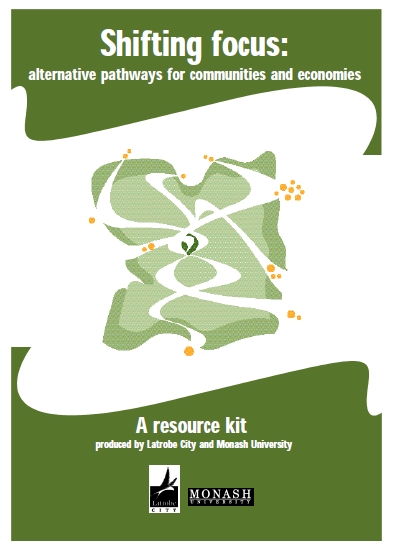How can local communities respond to pressing issues like restructuring, unemployment, the loss of social services, social isolation and dislocation?
What avenues are open for people who have been marginalised and disadvantaged by economic and social change to participate as active contributors and builders of their communities?
How might local councils, government agencies and institutions support the contribution of the marginalised?
What role can business play in community building?
Can community development projects provide a foundation for economic development?
If any of these questions sound familiar then this resource kit can help. It has been produced to support communities who are looking for practical ways to respond to the social and economic challenges of the twenty-first century.
The kit details steps and strategies that local communities can use to create initiatives that promote community well-being and potentially contribute to local economic sustainability. It is intended for anyone with an interest in community and economic development, and related fields like social planning and public policy.
The process has been developed through Community Partnering, a pilot project conducted in the Latrobe Valley by Latrobe City and Monash University. The Latrobe Valley has its own unique history shaped by the recent downsizing and privatisation of the Victorian power industry; but the issues facing the Valley are familiar to many rural and urban communities across Australia. These issues include unacceptably high levels of unemployment, recognition of the failure of economic policies to produce benefits for all, disaffected young people, gambling, and drug and alcohol abuse.
The Community Partnering process detailed in this resource kit involves working hand-in-hand with people who have been marginalised to build community-based projects. The process can include any group marginalised and largely excluded from participating in mainstream economic and community activities: people of non-English speaking background, Aboriginal people, people with disabilities, older people and so on. Depending on the community, those who are the focus of a project will vary. In the case of the Latrobe Valley the emphasis was on people disadvantaged by the restructuring of the power industry, especially unemployed workers, young people, and sole parents.
There are five steps in the Community Partnering process:
- Step 1: Recruiting and training community researchers
- Step 2: Working with people as the primary resource
- Step 3: Identifying secondary resources
- Step 4: Generating ideas for community initiatives
- Step 5: Turning ideas into reality
Each section of the resource kit deals with the five steps and outlines strategies and examples of materials that communities will find useful. The steps and strategies are a guide; they can be added to or modified so different communities can build their own pathways to community and economic development.





